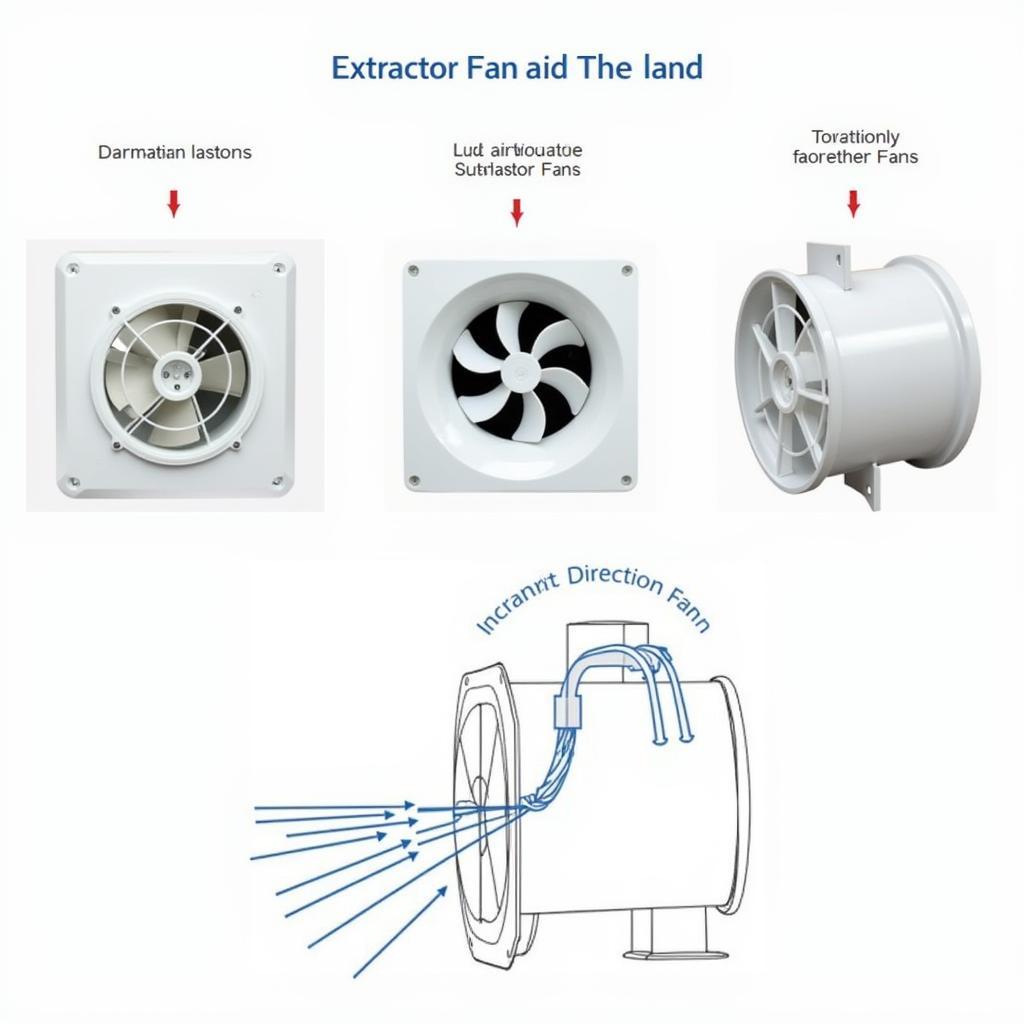Cooker hoods and extractor fans are essential kitchen appliances, designed to remove cooking fumes, grease, and odors. Understanding the difference between a cooker hood and an extractor fan can help you make the informed decision when upgrading your kitchen. While the terms are often used interchangeably, there are key distinctions that impact their functionality, installation, and overall performance.
Understanding Cooker Hoods
Cooker hoods, also known as range hoods, are typically larger, more visible units mounted above your cooktop. They combine a fan and a filter system to capture airborne grease and particles. Cooker hoods offer a range of styles, from sleek, modern designs to traditional chimney styles, allowing you to choose one that complements your kitchen aesthetic. They often include built-in lighting to illuminate your cooking surface. Many modern cooker hoods also offer features like variable speed settings, automatic shut-off timers, and gesture control. Some high-end models even integrate with smart home systems.
Types of Cooker Hoods
Several types of cooker hoods cater to different kitchen layouts and ventilation needs. Common types include wall-mounted hoods, island hoods, integrated hoods, and downdraft hoods. Each type offers unique benefits in terms of installation flexibility and aesthetic appeal.
-
Wall-mounted hoods: These are the most common type, mounted directly onto the wall above the cooktop.
-
Island hoods: Designed for cooktops located on kitchen islands, these hoods are suspended from the ceiling.
-
Integrated hoods: These hoods are built into cabinetry above the cooktop, providing a seamless and discreet look.
-
Downdraft hoods: These hoods rise up from behind the cooktop when in use and retract when not needed, making them ideal for kitchens with limited overhead space.
 Different Types of Cooker Hoods: Wall-mounted, Island, Integrated, and Downdraft
Different Types of Cooker Hoods: Wall-mounted, Island, Integrated, and Downdraft
Exploring Extractor Fans
Extractor fans, in contrast to cooker hoods, are typically smaller, more discreet units designed primarily for ventilation. Their primary function is to expel stale air, moisture, and odors from the kitchen. They are often installed directly into an exterior wall or ceiling and are generally less visually prominent than cooker hoods. Extractor fans are a more affordable option and are suitable for smaller kitchens or those with limited space above the cooktop.
Extractor Fan Options
Extractor fans come in various sizes and styles, each offering different airflow capacities. While they lack the aesthetic variety of cooker hoods, they provide a practical and cost-effective ventilation solution.
-
Axial fans: These fans use blades to draw air directly through the unit.
-
Centrifugal fans: These fans use a rotating impeller to draw air into the unit and then expel it outwards.
-
Inline fans: These fans are installed within the ducting system and are generally quieter than axial or centrifugal fans.
 Types of Extractor Fans: Axial, Centrifugal, and Inline
Types of Extractor Fans: Axial, Centrifugal, and Inline
Key Differences Between Cooker Hoods and Extractor Fans
The core difference between a cooker hood and an extractor fan lies in their primary function. While both contribute to improving air quality, a cooker hood primarily focuses on capturing grease and particulate matter produced during cooking, whereas an extractor fan primarily focuses on ventilating the room. This distinction influences several key features:
-
Filtration: Cooker hoods incorporate filters to trap grease and other particles, protecting your kitchen surfaces and improving air quality. Extractor fans generally do not include filters, relying solely on expelling air.
-
Size and Design: Cooker hoods are typically larger and more visually prominent, available in various styles to match your kitchen decor. Extractor fans are smaller and more discreet.
-
Installation: Cooker hoods are typically mounted above the cooktop, while extractor fans can be installed in walls or ceilings.
-
Cost: Cooker hoods are generally more expensive than extractor fans due to their added features and design complexity.
-
Noise Level: Both cooker hoods and extractor fans can generate noise, but some models are designed for quieter operation.
Which is Right for You?
Choosing between a cooker hood and an extractor fan depends on your individual needs and kitchen setup. If you prioritize grease capture and a stylish design, a cooker hood is the better choice. If you need a simple and affordable solution for basic ventilation, an extractor fan will suffice.
Conclusion: Making the Right Choice for Your Kitchen Ventilation
Understanding the difference between a cooker hood and an extractor fan is crucial for creating a clean, comfortable, and efficient kitchen. Consider your cooking habits, budget, and aesthetic preferences when making your decision. By selecting the right appliance, you can ensure optimal ventilation and a pleasant cooking experience.
FAQs
- Do all cooker hoods require ducting?
- How often should I clean my cooker hood filters?
- Can I install an extractor fan myself?
- What is the average lifespan of a cooker hood?
- Are there extractor fans suitable for bathrooms?
- How do I choose the right size extractor fan for my kitchen?
- What is the difference between ducted and recirculating cooker hoods?
Need further assistance? Contact us at Phone Number: 0903426737, Email: fansbongda@gmail.com Or visit our address: Lot 9, Zone 6, Gieng Day Ward, Ha Long City, Gieng Day, Ha Long, Quang Ninh, Vietnam. We have a 24/7 customer support team.


